Sun and rain have been alternating on Collard Hill over the past few days and since Monday we’ve walked the butterfly transect twice. When the winds have calmed and the sun has found its way through the clouds, we’ve had some great sightings of our beautiful Large Blues, showing that they are indeed very resilient.

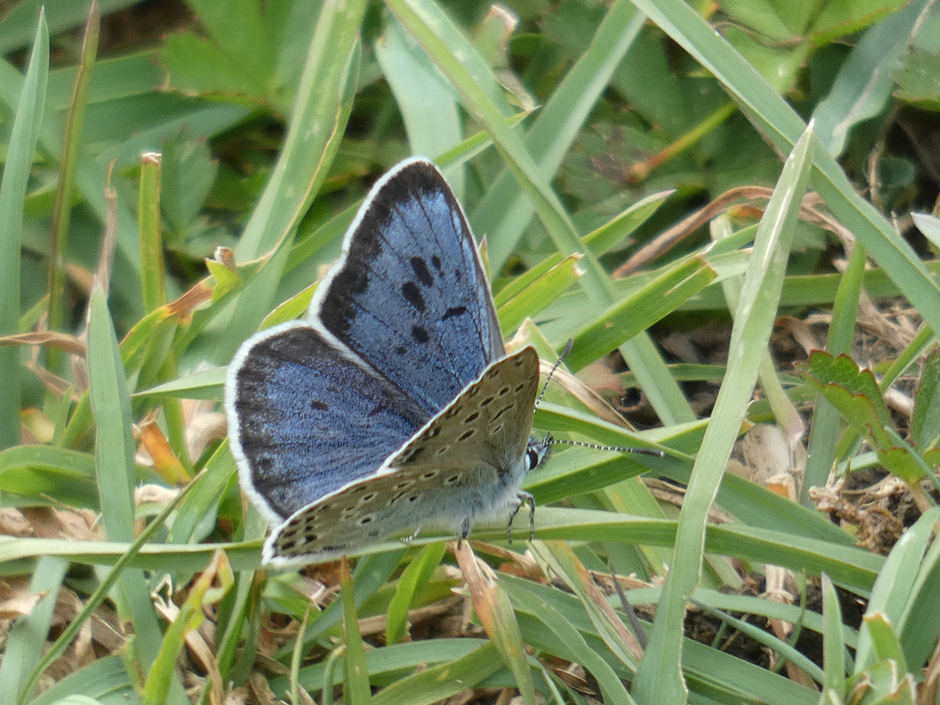
We’re social creatures and at a time when we don’t have so many walkers and visitors to the hill, Susie and I have felt perhaps an even stronger bond between us and the plants and animals who live alongside us. We’ve been in awe of Large blues who have cleverly found hideaways in the scrub, and we’re finding ourselves talking to them, paying them compliments and standing a little longer to watch. They have been calmly waiting out the tough patches of weather in their own clever ways, perhaps learned and refined over the 20 years they’ve been resident on Collard Hill. Susie and I have only been here a few months so we’ve got a lot to learn!
On Monday, I counted 28 Large Blues enjoying the sunshine (equalling the highest daily total on the hill this year so far). Most were in superb condition, with the odd one showing some wear and tear to its wing edges.


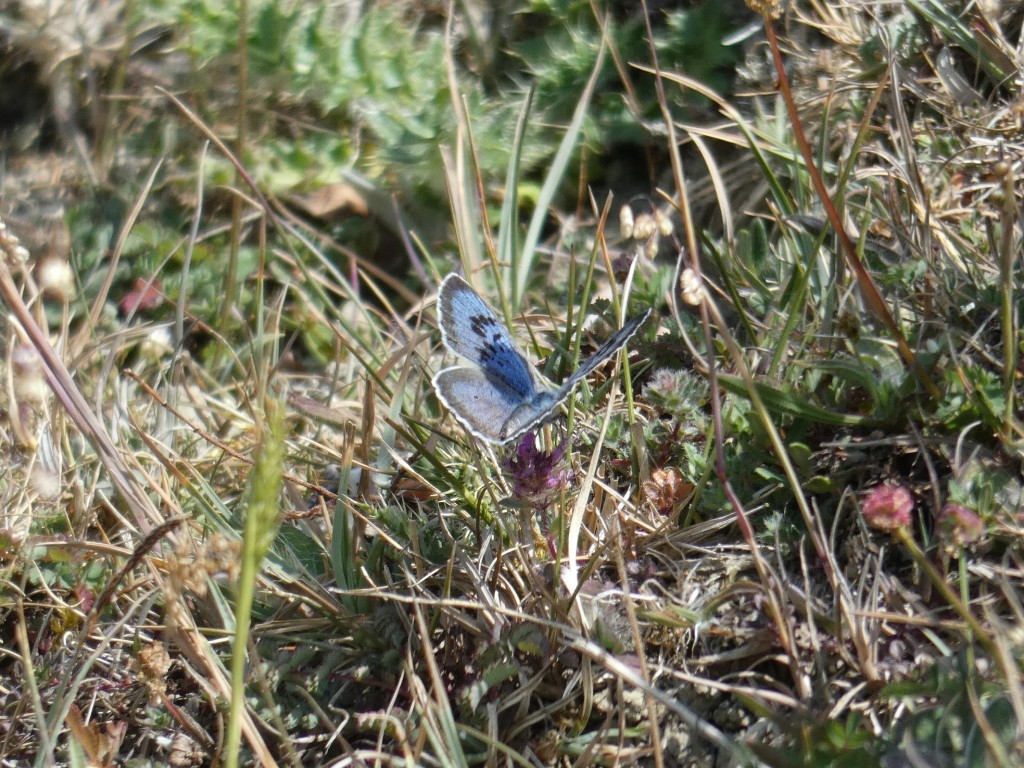
Around the hill I noted several webbed patches on foliage, and so it’s obvious that moths and butterflies have been finding their chosen food-plants to deposit eggs. I don’t know yet which species will emerge from this one, so we’ll return to it later.
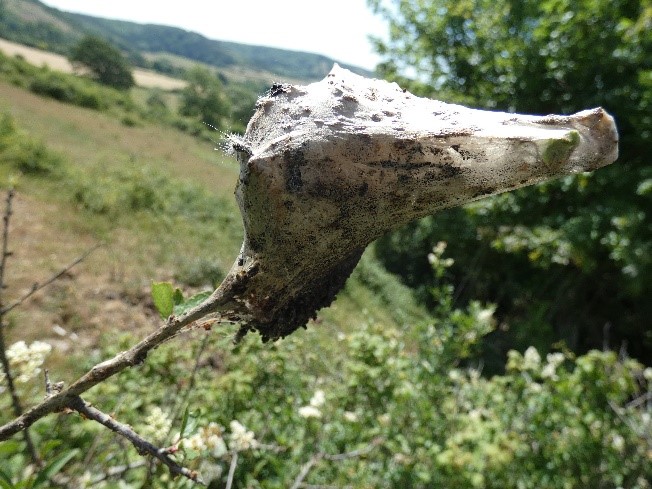
Then this late-stage six-spot burnett caterpillar caught my eye as I passed the east boundary hedge. It was very well fed!

Amazingly, right in the same spot, on the same privet branch two days later I found this fascinating cocoon. Actually, I think if I’d stayed watching that caterpillar a little longer, I might have actually seen it pupate.

I’ll go back again for sure and look forward to seeing the moth emerge perhaps! Of course, it’s wildly exciting to see the large blues on the wing but perhaps coming a close second to that experience will be watching some of the other butterfly and moth species on Collard Hill throughout their lifecycles over the coming weeks too.
It’s helped me to remember that metamorphosis for a caterpillar certainly isn’t just a process of taking a rest and attaching some wings. It isn’t a clean and easy process. With so much conversation happening about our own lives having to change due to the coronavirus outbreak it’s amazing to be able to follow some natural world metamorphosis this summer. I’ll really hope to spot the adult six burnett in the next few days. It’s one of our favourites!
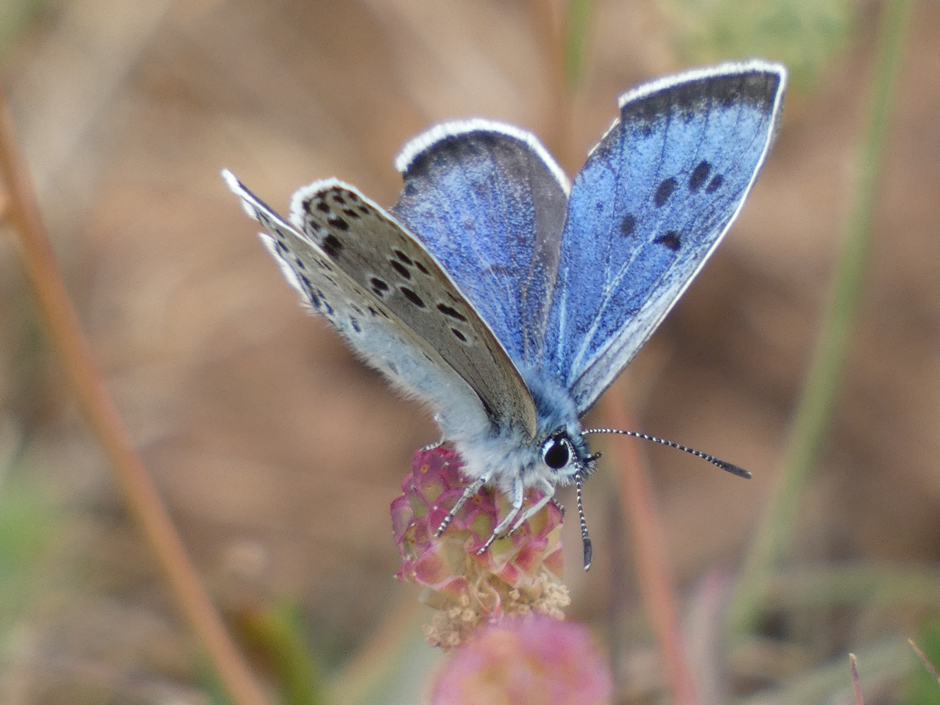
We noted the first appearance of Large Blues in the lower levels of the hill this week. Sections of the transect which had previously been empty of butterfly life, suddenly have several Large Blues and others present. It has really helped that Susie’s distance vision is incredible. On Wednesday, Susie was the first to spot this one tucked away in Hawthorn on the west end of the hill below the conifer trees.
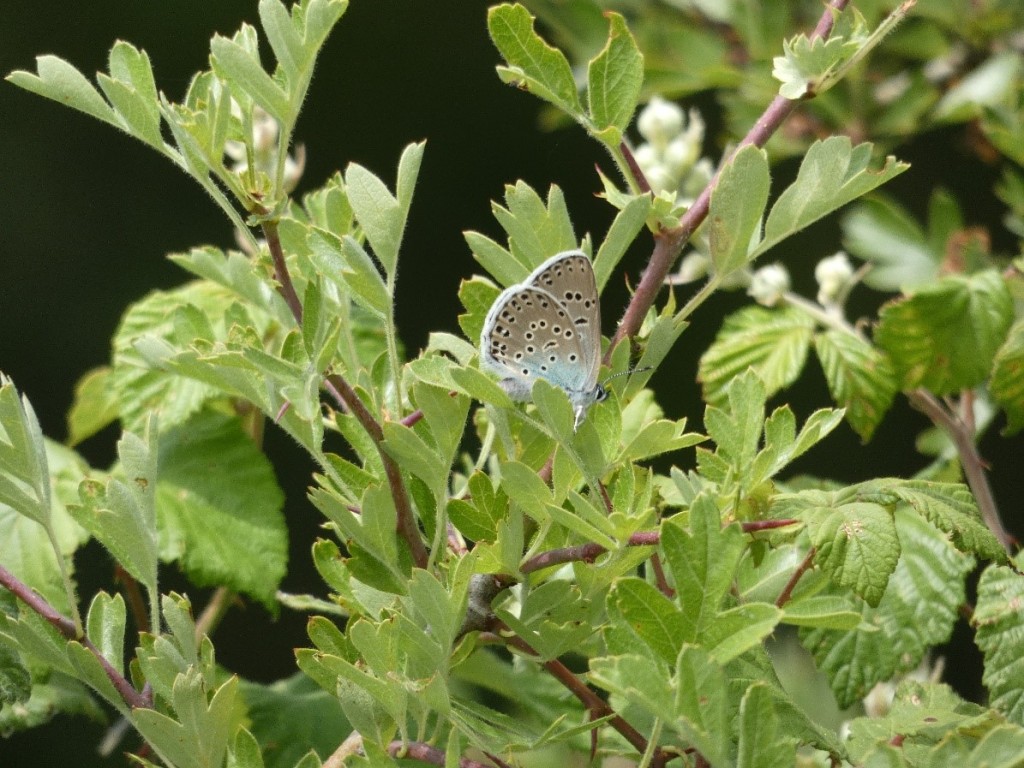
Susie then also spotted this gorgeous Common Blue female who had quickly moved onto the path to warm up as the clouds parted.
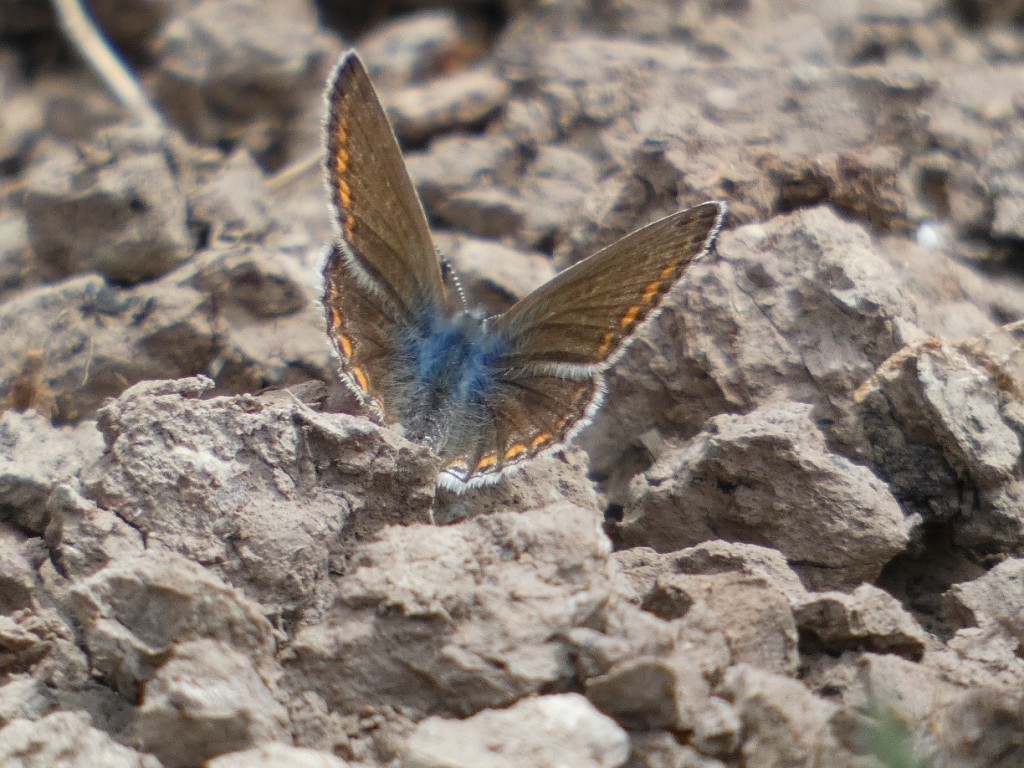
The Large Blues have been stopping still to sun themselves more often this week and I have managed to get some nice photos. For anyone interested, I’m using a bridge camera with a strong zoom range so that I can be quick to capture anything at any distance. The light as helped me to get some sharp, bright shots which I hope you enjoy.
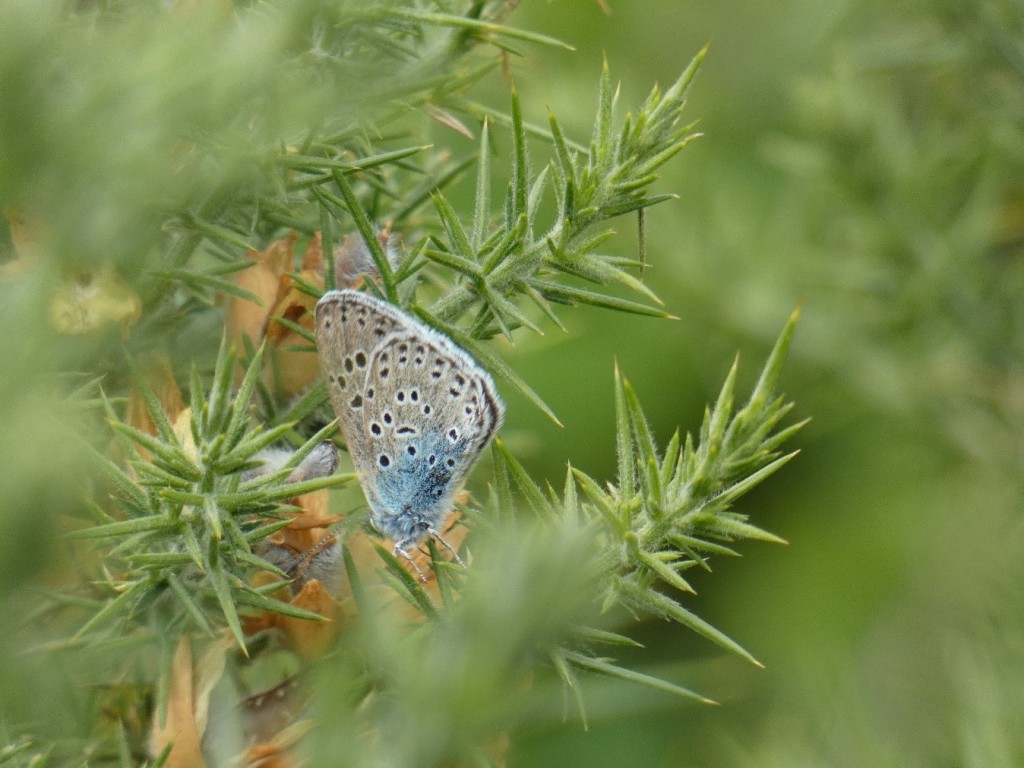
Although at times it’s not been dry enough for the butterflies to emerge, there have been some stunning creatures around. A very energized group of Long-tailed tits still regularly chatter all around us under the pines as we walk through. Several fledgling wrens filled the scrub near the top of the slope on Monday and across the whole hill the birdsong has been beautiful.
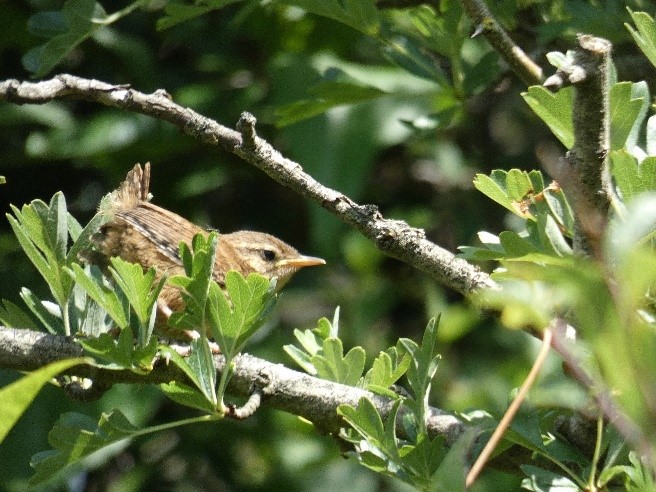
I thought I’d share a few pictures of the songbirds. Blackcap, dunnock, song thrush and chiffchaff song has been rising from the hillside and hopefully seeing them might bring back memories of the hill from previous visits you might have had. A little frustratingly I’ve still not photographed the gorgeous lesser whitethroat yet though… he was singing clear from the hedges at the north east corner on Monday but is elusive to the eye… Perhaps next week!
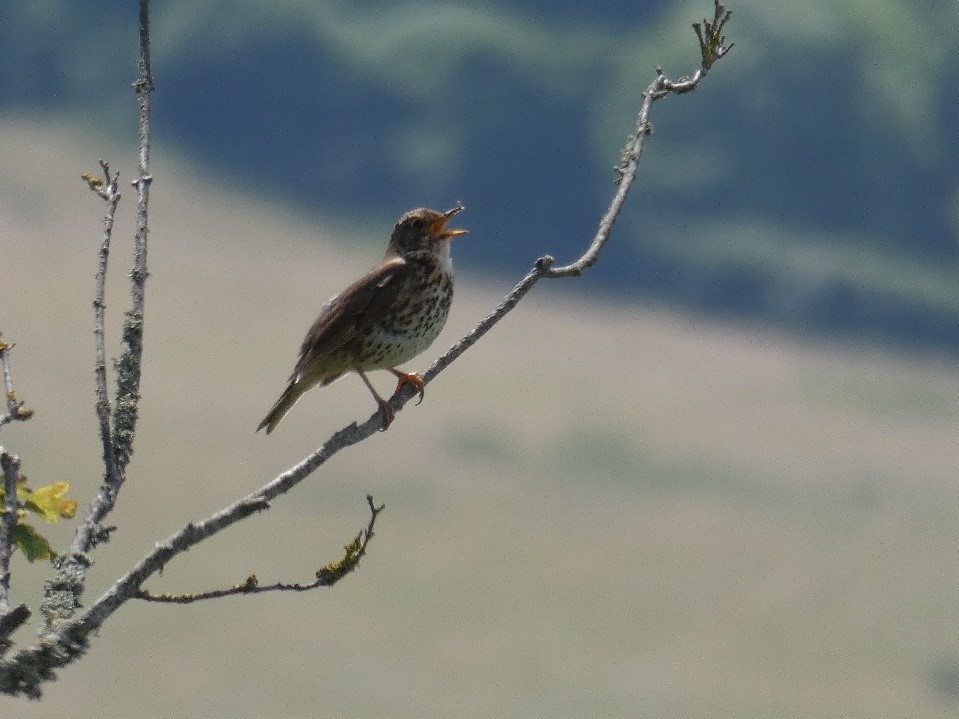
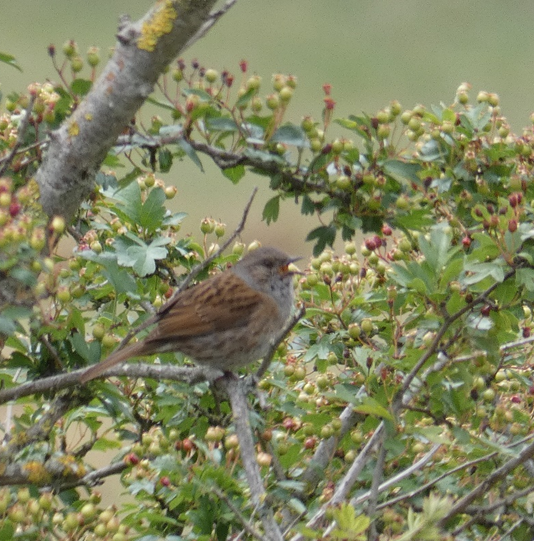
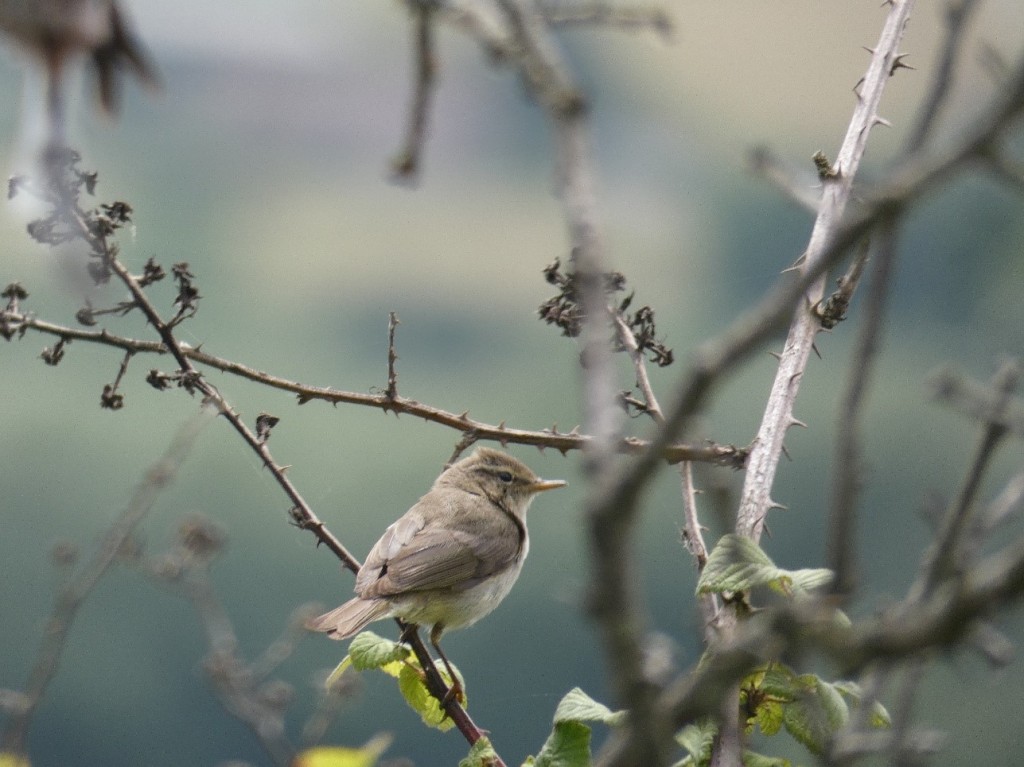
I’m hoping that the much-needed rain that’s falling this afternoon (Thursday) is going to work it’s wonders and then move on, leaving the butterflies with some more fine, sunny, flying days.
That’s all from us for now. Thanks for reading and take care.

Well done James and Susie, what a brilliant update! Thanks for all your effort.